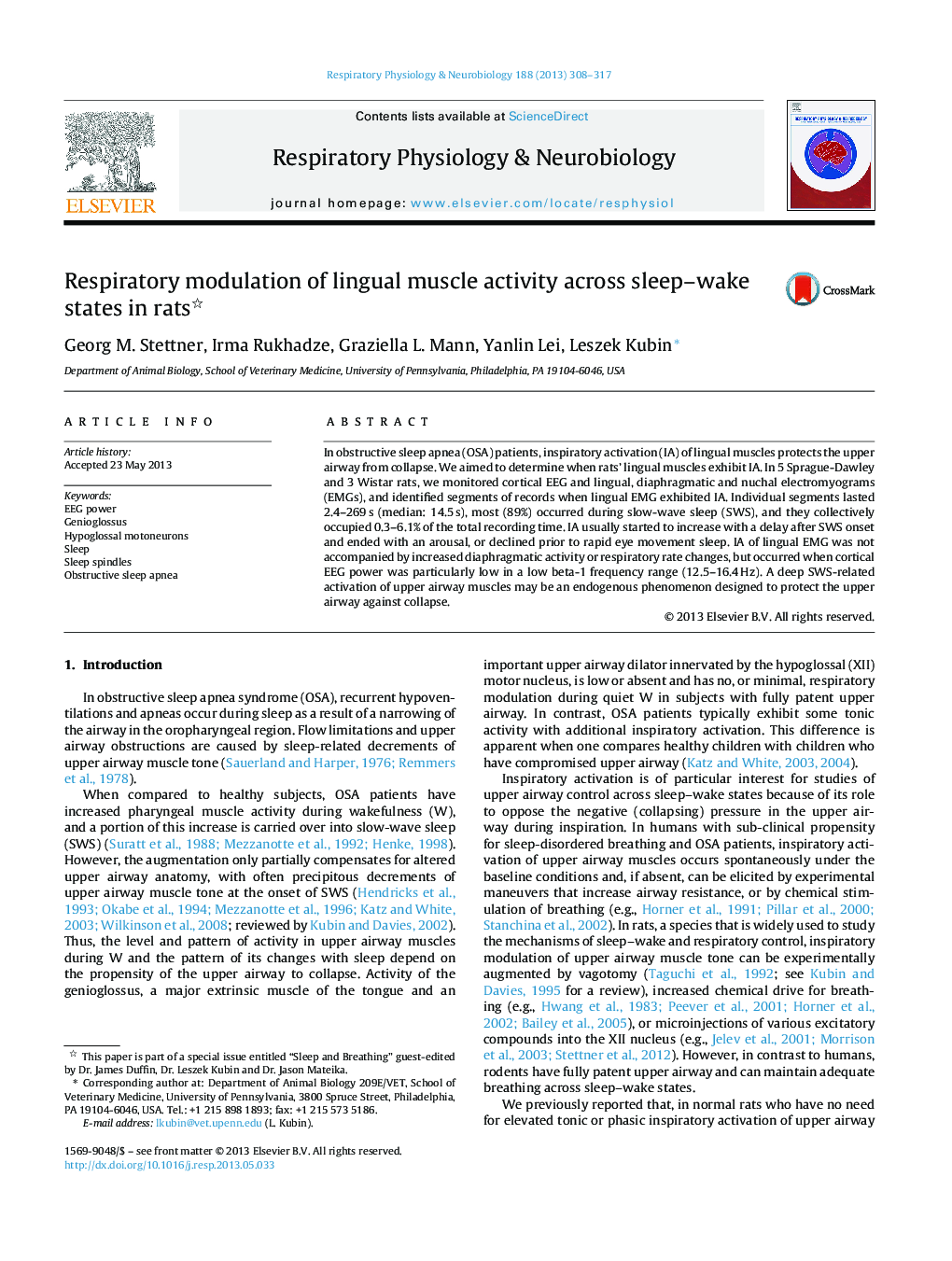| Article ID | Journal | Published Year | Pages | File Type |
|---|---|---|---|---|
| 2847142 | Respiratory Physiology & Neurobiology | 2013 | 10 Pages |
•Inspiratory activation (IA) of upper airway muscles protects the airway from collapse.•IA of upper airway muscle tone is rare in rats, and its determinants are unknown.•In Sprague-Dawley and Wistar rats, IA occurs mainly during deep slow-wave sleep.•State-dependence of IA suggests that it is a central, airway-protecting mechanism.
In obstructive sleep apnea (OSA) patients, inspiratory activation (IA) of lingual muscles protects the upper airway from collapse. We aimed to determine when rats’ lingual muscles exhibit IA. In 5 Sprague-Dawley and 3 Wistar rats, we monitored cortical EEG and lingual, diaphragmatic and nuchal electromyograms (EMGs), and identified segments of records when lingual EMG exhibited IA. Individual segments lasted 2.4–269 s (median: 14.5 s), most (89%) occurred during slow-wave sleep (SWS), and they collectively occupied 0.3–6.1% of the total recording time. IA usually started to increase with a delay after SWS onset and ended with an arousal, or declined prior to rapid eye movement sleep. IA of lingual EMG was not accompanied by increased diaphragmatic activity or respiratory rate changes, but occurred when cortical EEG power was particularly low in a low beta-1 frequency range (12.5–16.4 Hz). A deep SWS-related activation of upper airway muscles may be an endogenous phenomenon designed to protect the upper airway against collapse.
